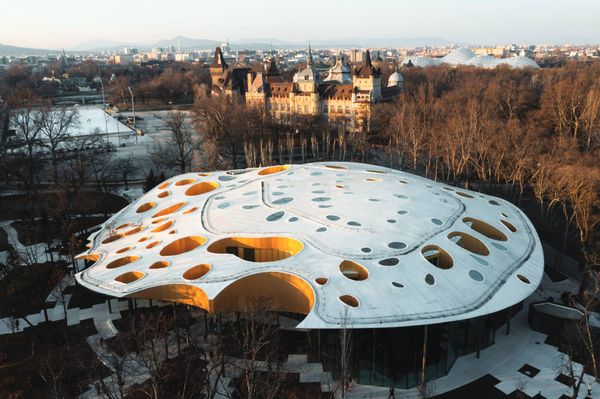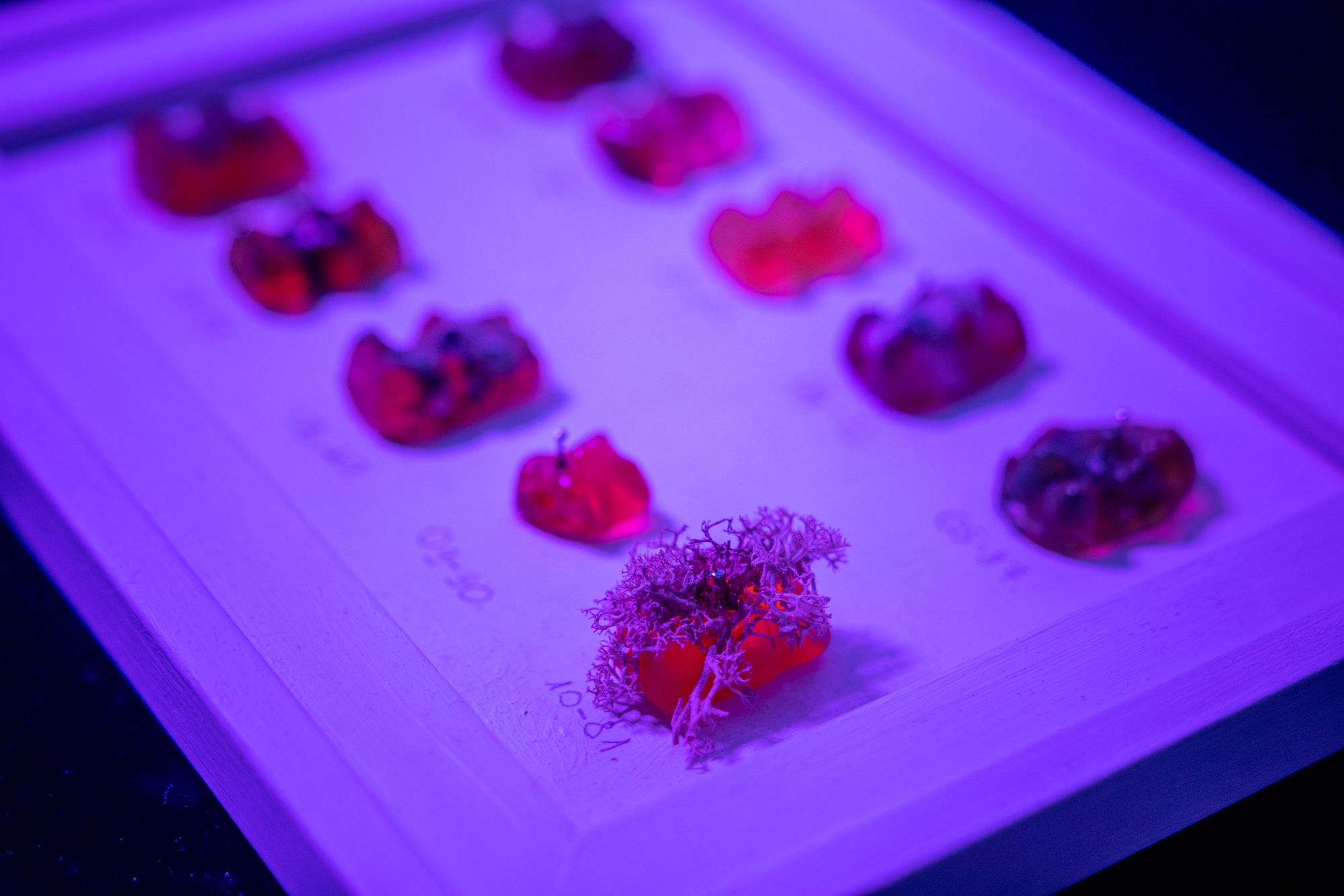In 100 years, will there still be honey and coffee on Earth? Will Haribo Goldbears go extinct, will we still be able to make paprikás krumpli (paprika potatoes), if the climate change doesn’t slow down? What strategies do researchers of the future of food and diet use in order to make us realize and, where appropriate, address the increasingly threatening global problems? In the latest HypeLAB episode of the TASTE month, we have selected regional art and speculative design projects that range from applied methods to utopian or dystopian visions of how and what we will eat in the upcoming decades.
‘What should we eat?’ we ask ourselves, our colleagues during the lunch break or at home before we go shopping for the weekend, several times a day. We (still) have a variety to choose from: variations of a food type in rows on store shelves, a wide selection of takeout, big city restaurants by the dozen, all creating an illusion of inexhaustible possibilities to the consumer society. They are the subordinates of food production and the capitalist growth logic. Meanwhile, a pandemic, wars and disintegrating economic communities (e.g. Brexit) threaten the food chain, already burdened by the climate change and the growing population. What should we eat? Taking all of this into account, we’re facing dystopic images rather than the confusion of richness.
The food of the future is a well-covered subject in the international design scene and the artist community, as well. Het Nieuwe Instituut, a cultural and design center in Rotterdam, has been researching the automated landscapes for years, the Beazley Designs of the Year in London has targeted, in an unusual twist, carnivores with a plant-based burger instead of an object in the category of product design in 2020, and received an award. Last year, the MENÜ imaginaire group exhibition on the topic of future food, organized by OFF-Biennale Budapest, opened in Hungary, and its curators, Judit Szalipszki, Emese Mucsi and Anna Tüdős, are also launching a food film festival in Budapest this fall. We can see that this topic is inspiring creatives around the world, and that artists and speculative designers are choosing different strategies to present their ideas about the future of food. In our subjective round-up, we showcase the different creative approaches through projects from across the region.
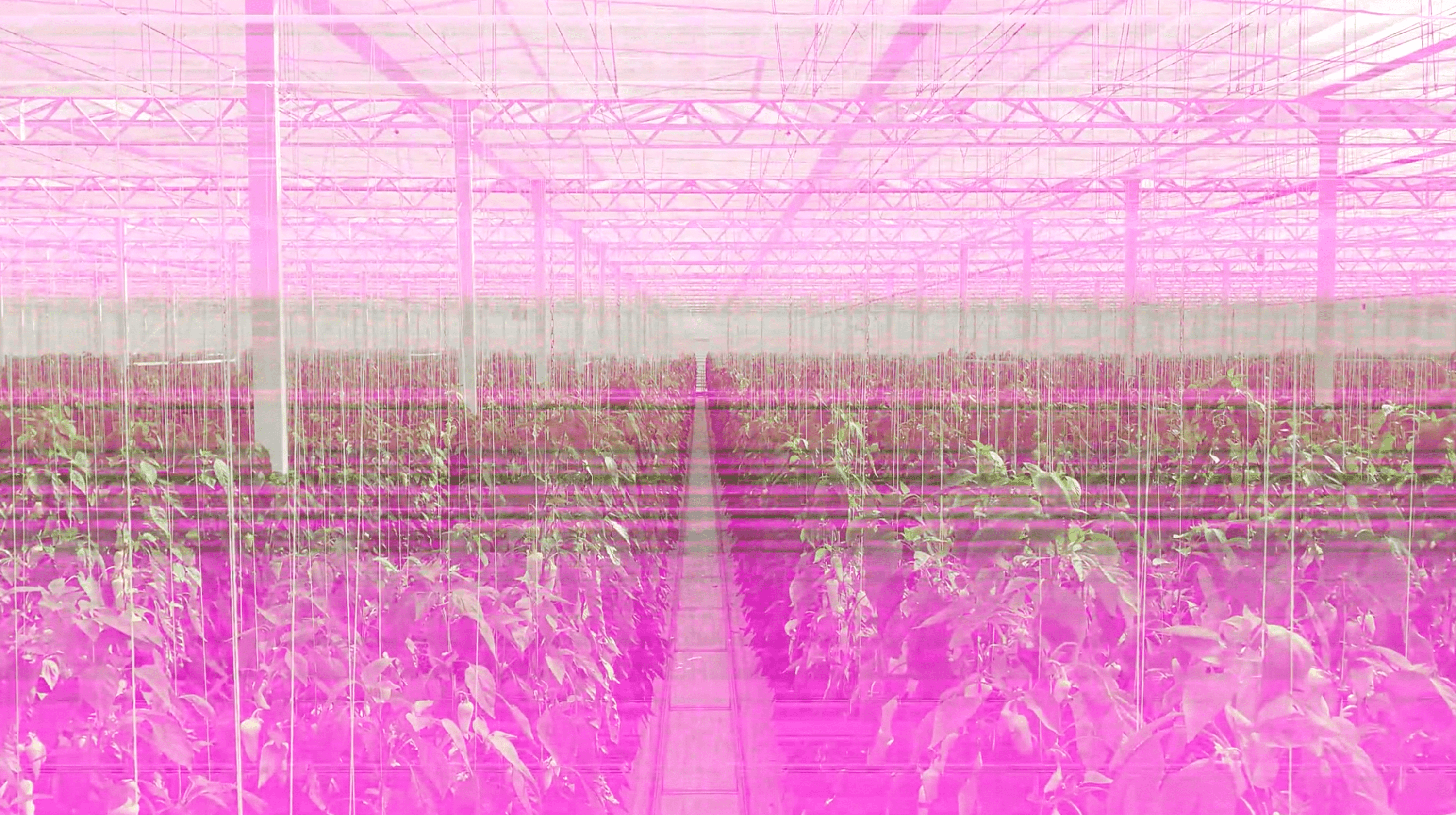
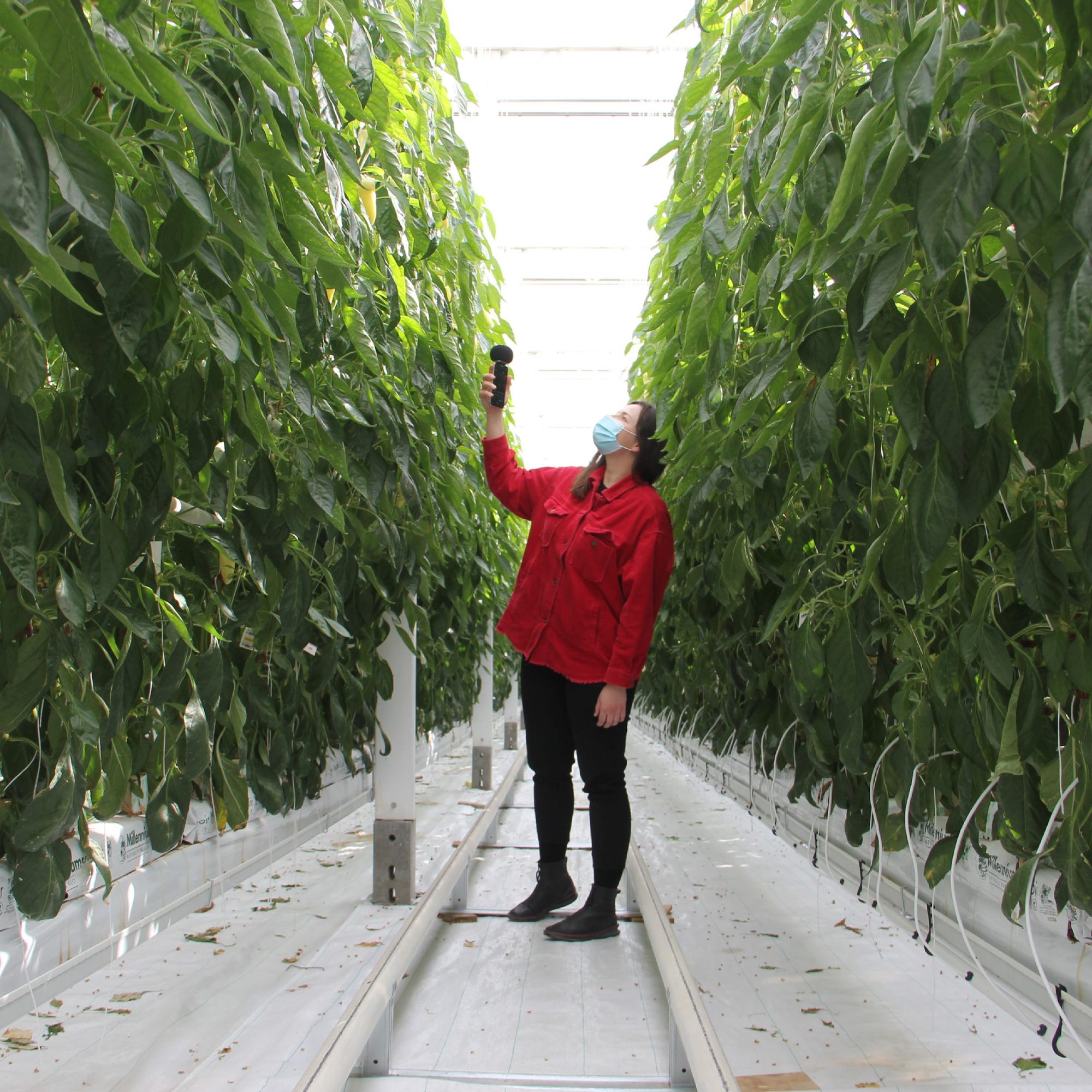
The selection process was complicated from the start by conceptual confusion. What are we facing? Are we talking about food design, bio design, speculative design, eat art or simply a trend in contemporary art that cannot be labeled, in works that explore and say something about the future of food? Judit Szalipszki, curator at Trafó Gallery and co-organizer of the aforementioned MENÜ imaginaire exhibition, is diplomatic when she talks about “creators who see food as a medium,” without excluding artists, designers and creative thinkers from other disciplines from the discussion.
“Art and design projects dealing with the food of the future move along a spectrum—we have speculative visions that have no intention of becoming a product, an applicable process in the future, while at the other end of the spectrum we have those that build on reality and speculation to offer a possible solution. While there are overlaps between the methods, they also have in common that the works generally aim to expand the imagination and to familiarize the recipient with new ways of relating to food and daily routine. In this regard, there isn’t necessarily a distinction between an artistic and a speculative design project. Although their formal language may be different, they share a basic impact—they reframe our relationship with food, food supply and eating,” says Judit.
But can this reframing be so powerful that we transform our daily routines after absorbing the sensitizing works on the future of food? Eating is such an elemental action, and our eating habits are so ingrained in our daily lives that it is naive to think that an exhibition experience will turn visitors to local or seasonal ingredients, learn circular economy models or even go vegan. However, Judit Szalipszki adds that it is not necessarily progressive for a project to aim to bring about positive change by prescribing a different consumption pattern. “The problem with the current system is that it assumes that everyone is a consumer, so if a piece of art tells you to keep consuming, but in a different way, it’s actually stuck in the same paradigm,” she points out.
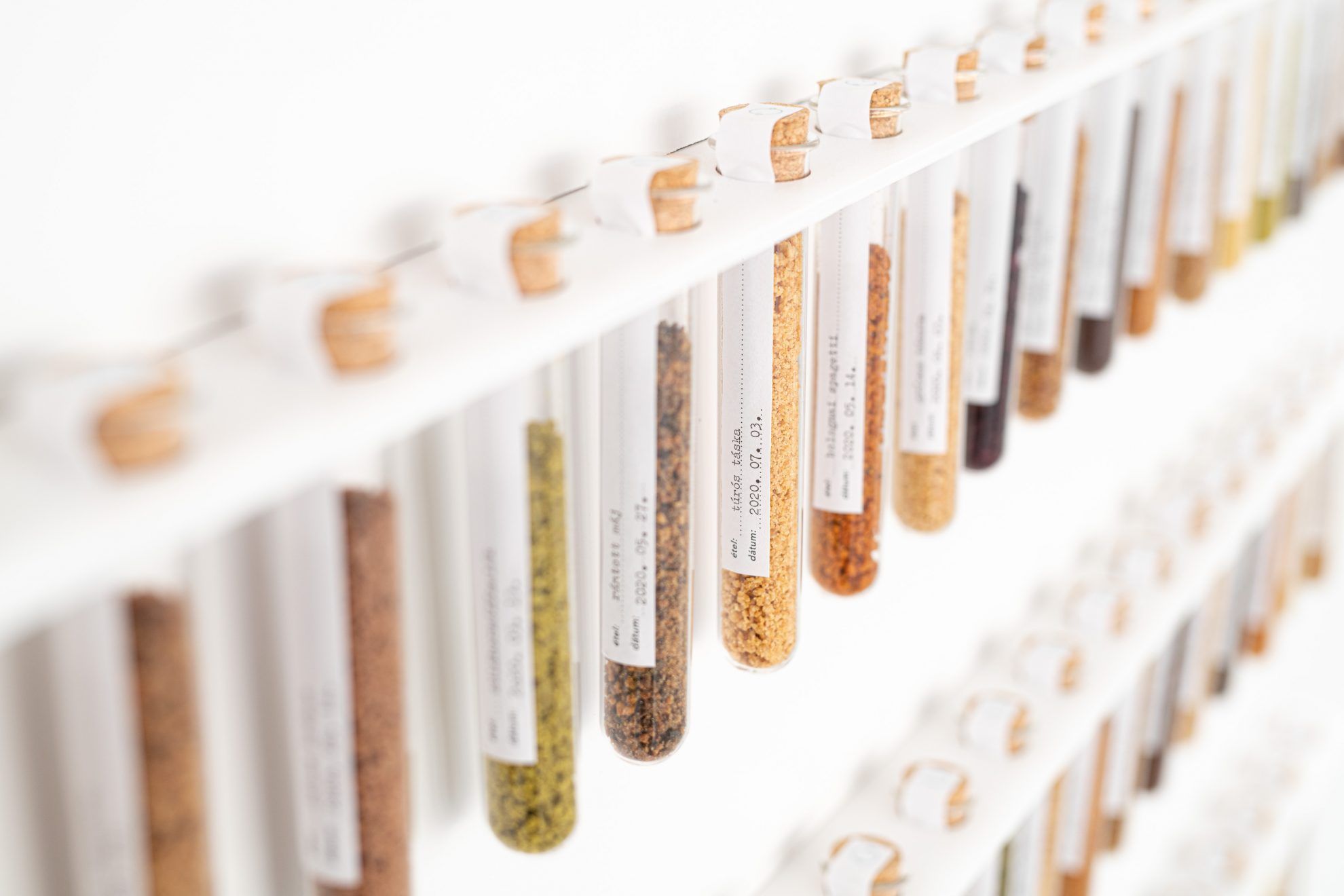
Angéla Góg—Table of the Future
Angéla Góg came to the world of food design after studying design. Her doctoral research and accompanying project focused on the relationship between memory and food, besides possible processes of preservation. Just as global climate change is radically transforming the forms and sources of food supply as we know it, familiar ingredients and with them the food we hold dear to our hearts are threatened with disappearance. Angéla Góg has been researching ways to preserve sustainable food and flavors that evoke memories, and that’s how she discovered drying, which she used to turn our favorite dishes from bean stew to cherry soup into food powders that also preserve flavors. Stirred into porridge, the powders become comfort evoking memories. The archive of hundreds of tasting powders is a flavor bank for the future.
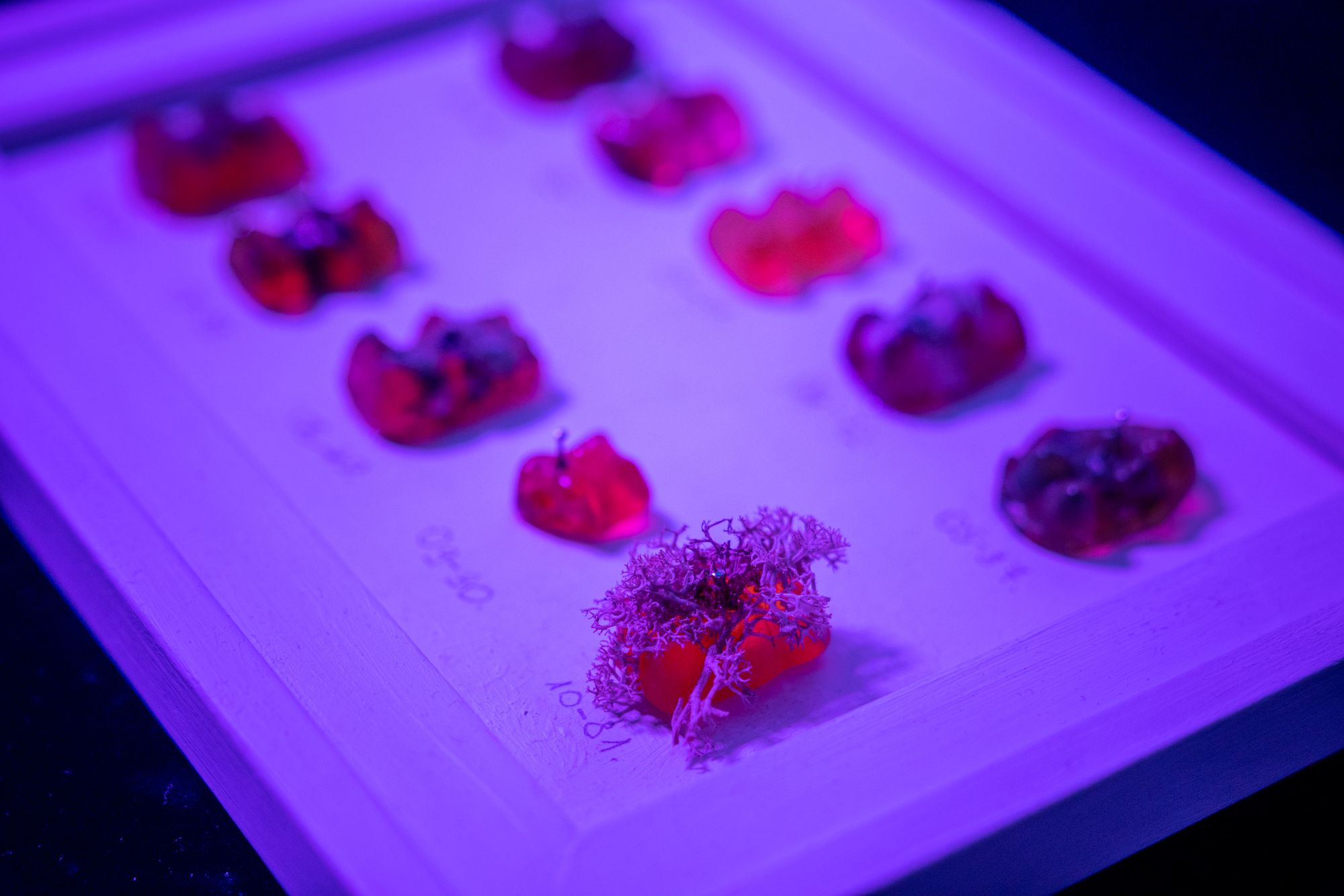
Dominika Márton—The Museum of Extinct Food
Similarly to Angéla Góg, Dominika Márton involves the motive of archives in her work, as well, except she doesn’t predict the future from the present, but looks back at the defining food types of our present from the future. The Museum of Extinct Food is an assemblage of foods that are expected to disappear within decades as a result of climate change. The fossilized foods are accompanied by objective descriptions laced with irony—in the Museum of Extinct Foods, honey is now labeled as sugar syrup made from insect fluids and ground coffee as caffeinated crop grist.
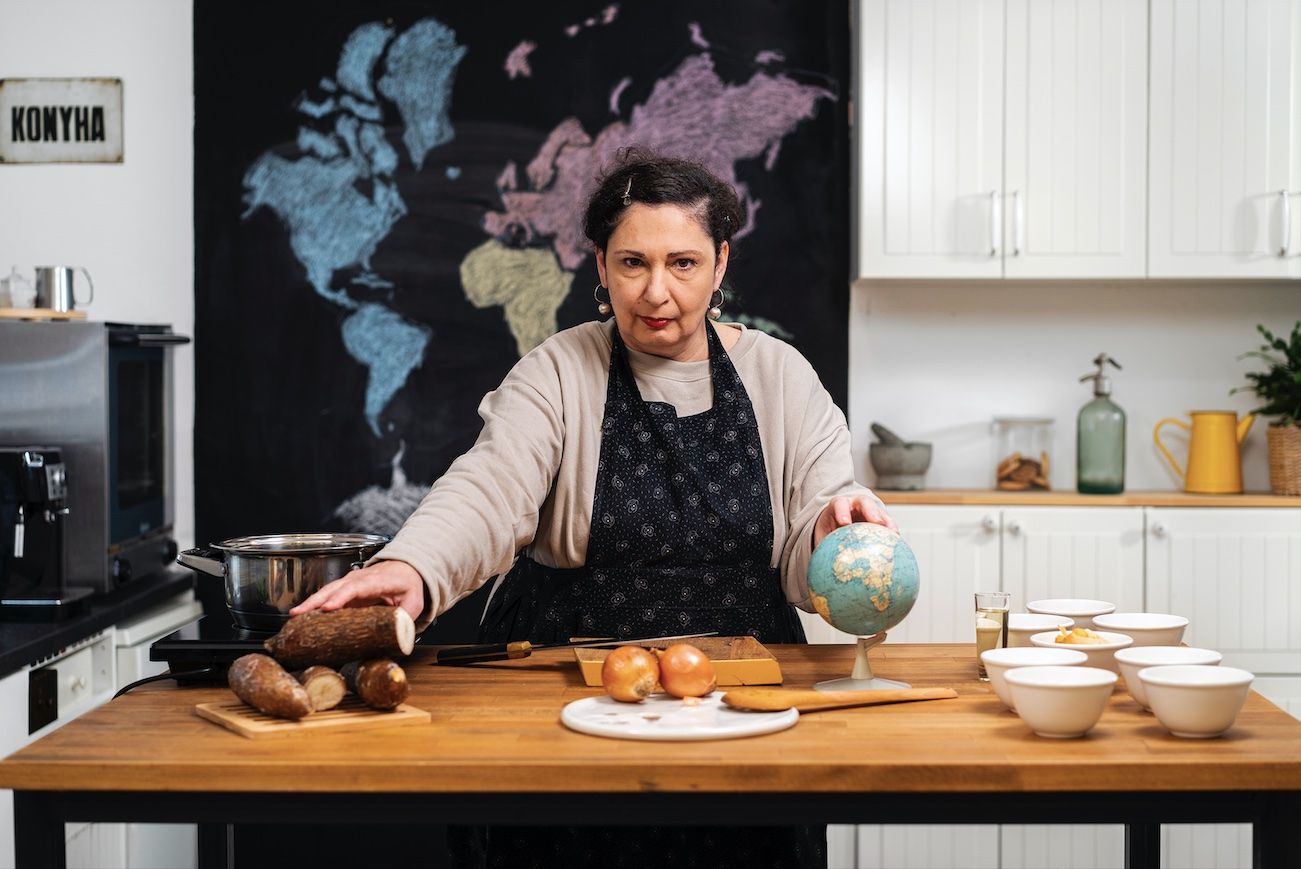
Eszter Ágnes Szabó—Manióka Show: Gyökér-előrejelzés (Maniocs: Root Forecast—free translation)
Global warming does not skip Hungary, which results that growing potatoes will no longer be sustainable in our country. While Table of Future seeks answers for the preservation of traditional food, Eszter Ágnes Szabó rather invites us to adapt in her video Manióka Show: Gyökér-előrejelzés. The artist reconsiders traditional Hungarian dishes with a potato base—in her speculative cooking show, she replaces potatoes with a more drought-tolerant plant, manioc, whose future expansion seems legitimate given the pace of climate change.
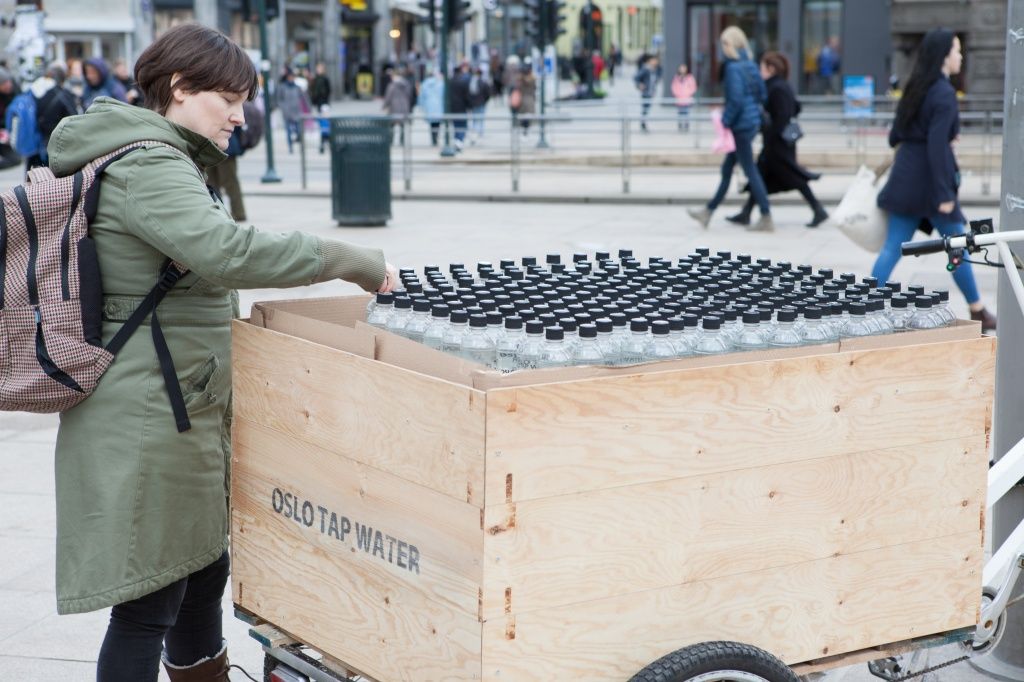
Martinka Bobrikova & Oscar De Carmen: Kitchen Dialogues
Drawing on the experience of sharing a meal, the Czech artist duo has periodically organized meetups called Kitchen Dialogues, the results of which have recently been published. Kitchen Dialogues is a state between a dinner party and a performance, where participants discuss the causes and effects of overconsumption and other socio-ecological problems while literally getting a taste of the problem. The duo often builds on community events and reuses existing resources: for instance, they have distributed bottled Norwegian tap water on the streets and use food thrown in the trash in their projects. Their food-related events and artworks see as precursors to the work of Filippo Tommaso Marinetti and The Futurist Cookbook published in 1932, and the eat art activities of Daniel Spoerri, among others.

Fuzzy Earth—WALK UNDER THE MIDNIGHT SUN
In their project called Not Quite California Wonder, Tekla Gedeon and Sebastian Gschanes, or the Fuzzy Earth collective, together with engineers, farmers and botanists, have for the first time explored alternative ways of growing bell peppers, their different interpretations, past, present and future. “We all know bell peppers. We all have a relationship with them in our everyday life. On one hand, bell-peppers are ordinary crops, that are familiar to many, on the other hand they are carriers of knowledge and values hidden for most consumers. We explore the role of bell peppers over time as a plant, food, industry, symbol of political power and ecological catalyst. We trace back the history of bell peppers to their origin lands, to its ritualistic applications and its colonial histories” — they share.
In their latest work, WALK UNDER THE MIDNIGHT SUN (with which they applied to the Hungarian Pavilion of Biennale of Architecture in Venice), the pepper for stuffing, much used in Hungarian cuisine, takes the viewer through its own history and the less accessible, hidden spaces of food production in first person singular.
The collective explores the future of food through speculative design methods: “We play out alternative scenarios in the present through creating workshops, artefacts, installations, storytelling events, and films to spark collective imagination and to discuss other possible ways to grow, to breed and to consume food. Our projects are deeply grounded in our present society through research, collaboration with experts, participation, real-time tests, and evaluation processes” — they say.
Photos:
Cover / Image 4: Dominika Márton: The Museum of Extinct Food, installation | photo: Antal Gabelics, Rectors’ kitchen at the Hungarian University of Fine Arts, 2021
Image 2: Fuzzy Earth: Visiting a Greenhouse, Szentes, 2021
Image 3: Angéla Góg: Table of the Future | photo: Milán Rácmolnár, 2020
Image 5: Eszter Ágnes Szabó: Manióka Show – Gyökér-előrejelzés | photo: Benedek Bognár & Zsuzsanna Simon, 2021
Image 6: Martinka Bobrikova & Oscar de Carmen: 1000 Bottles of Tap Water | photo: Ayatgali Tuleubek, Eirik Slyngstad
Image 7: Fuzzy Earth: Walk Under the Midnight Sun, 2022

The most stylish cosmetics of the region | TOP 5
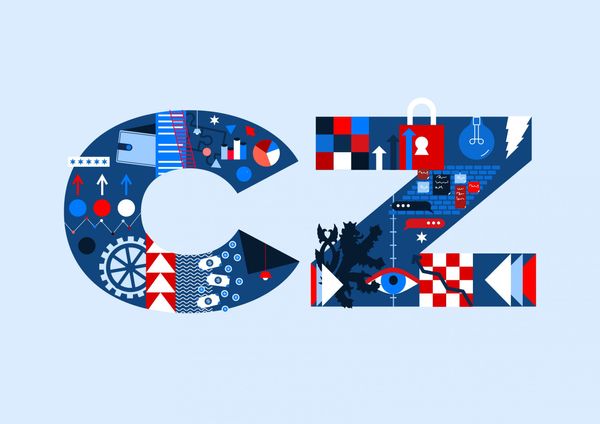
Prague is the hub, but where is the countryside? | Innovation and startups in the CEE region II.
